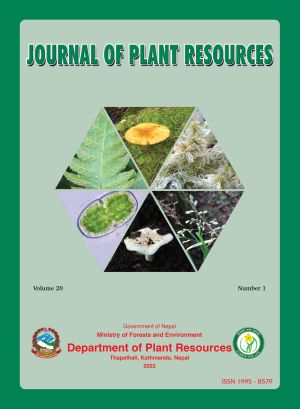Formulation of Herbal Tea from Nepalese Medicinal Plants: Phenolic Assay, Proximate Composition and In-vivo Toxicity Profiling of Medicinal Plants with Nutritive Benefits
DOI:
https://doi.org/10.3126/bdpr.v20i01.56603Keywords:
Acute oral toxicity, Asparagus officinalis, Phytochemical screening, Proximate analysisAbstract
Herbal tea, also known as tisane, is a beverage made from the infusion or decoction of plant material in hot water. True tea comes from the Camellia sinensis plant, while tisane (herbal tea) comes from a water-based infusion of herbs, spices, flowers, leaves etc. This study aimed to formulate and determine the nutraceutical value (proximate analysis), phytochemical value (total phenolic content) and in-vivo toxicity of the different medicinal plants used to prepare three different types of herbal tea formulations. Natural Product Research Laboratory (NPRL)-1 [Asparagus officinalis L., Phyllanthus emblica L., Mentha piperita L., Elettaria cardamomum (L.) Maton and Camellia sinensis (L.) Kuntze], NPRL-2 [Ocimum tenuiflorum L., Bergenia ciliate (Haw.) Sternb., Elettaria cardamom (L.) maton and Camellia sinensis (L.) Kuntze] and NPRL-3 [Salvia rosmarinus Spenn., Cymbopogon citratus (DC.) Stapf, Senegalia catechu (L.f.) P.J.H.Hurter & Mabb. Elettaria cardamomum (L.) Maton and Withania somnifera (L.) Dunal] herbal tea formulations were prepared from these selected medicinal plants. They were respectively tested for their properties. All the plants included were highly nutritional and none were found toxic. The results suggested that herbal tea made up of these potent plants’ parts can be a good choice for health-promoting benefits. These formulations could further be studied for their other beneficial activities.




